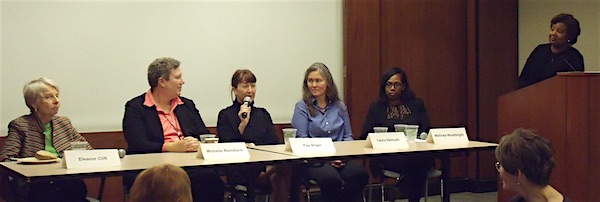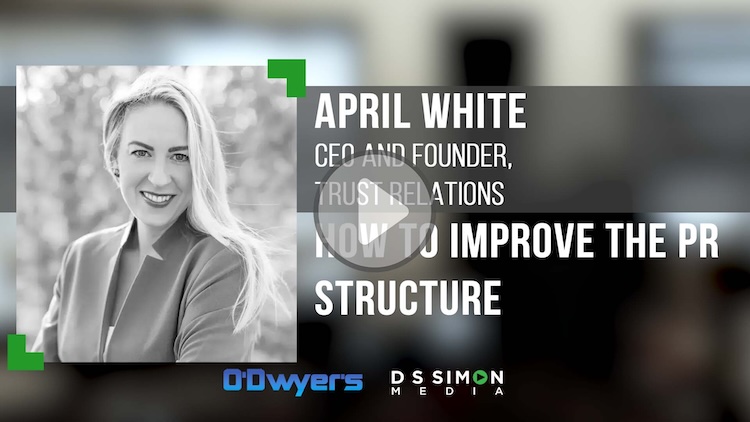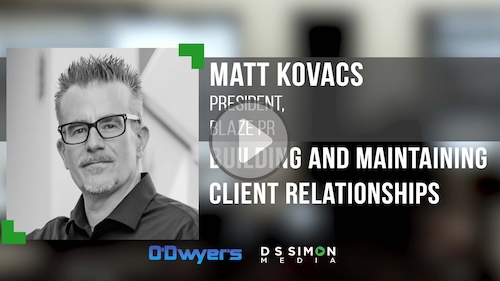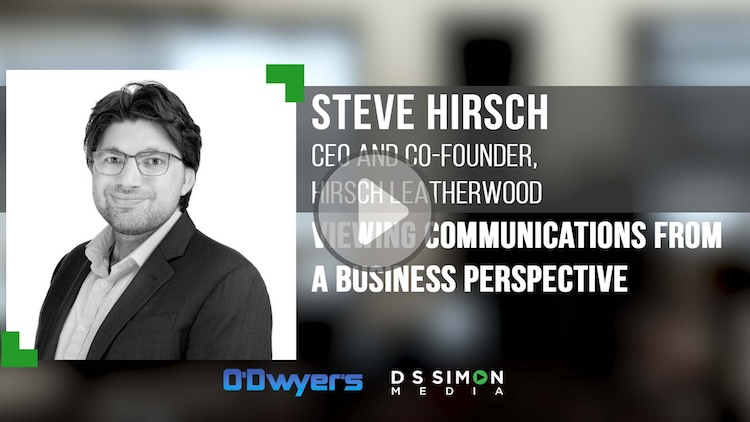 Washington Women in Public Relations' annual media roundtable Oct. 21 at the American Chemical Society in Washington, D.C. offered the 90 attendees valuable insight into how media pros like to be pitched story ideas, what their day is like, the process of how stories make it into print, on the air and online and how they keep up with the tsunami of news coming at them 24/7.
Washington Women in Public Relations' annual media roundtable Oct. 21 at the American Chemical Society in Washington, D.C. offered the 90 attendees valuable insight into how media pros like to be pitched story ideas, what their day is like, the process of how stories make it into print, on the air and online and how they keep up with the tsunami of news coming at them 24/7.“My day starts always the day before and it’s continuous all day long, 24 hours,” Melinda Woolbright, planning/news assignment editor, NBC4 Washington, asserted. “I’m always on my phone."
Woolbright explained that e-mails from viewers provide a great source of original story ideas, as does the latest news on the social media sites. “I am scouring everywhere. I can’t think that there’s one place that I don’t look,” she said.
Michele Remillard, executive producer, C-SPAN’s Washington Journal, said she begins her day with a planning meeting and by looking at the other cable networks and going through stacks of newspapers. “Twitter is a big information source for me,” she added.
|
|
Laura Helmuth, health, science and environment editor, The Washington Post, oversees a team of about a dozen reporters who turn their stories in the night before and then follow up the next morning regarding any breaking news that would affect the copy.
Helmuth explained she gets a lot of news from Twitter and added, “European Twitter has been going bananas while we were sleeping, so if anything exciting happened in Europe, we would know about it first thing in the morning. If anything big happened, we would redistribute the effort.”
Eleanor Clift, Washington correspondent for The Daily Beast and formerly with Newsweek and The McLaughlin Group, explained that she executes story ideas that come from the “higher-ups” in Washington and New York and that she also pitches her own original story ideas. She stated that she doesn’t get many phone calls as most communication is by e-mail. “For everyone, phone traffic is down.”
When discussing potential story ideas for her show, C-SPAN’s Remillard stated that since her show is guest-based, she does receive many pitches. “If a big story breaks and I get an e-mail in my box saying, ‘we have these guests available who can talk about this topic,’ I’m going to call you,” she asserted.
Pitch web and print
When asked if PR pros should send pitches to both the web and traditional side of a news organization, NBC4’s Woolbright, said yes, definitely. “There’s a lot of stories that can go online that are website friendly versus television friendly, she said.
In terms of pitches, Fay Sliger, senior director of communications, Vox Media, the digital publisher with eight media brands, including SB Nation, The Verge and Vox, stated, “We also pitch a lot of the stories of our various brands we get from PR people under embargo, that are exclusive stories, exclusive interviews, that we know other outlets will pick up and we want those other outlets to be crediting and linking to our reporting.”
Sliger handles corporate communications for Vox Media. She oversees a staff and an external PR agency. For instance, she is the contact if Vox is acquiring a company or has made a new senior-level hire. She also facilitates broadcast and radio opportunities for her editors and reporters. And she works with many media business reporters from the New York Times, the Wall Street Journal, Bloomberg and other news organizations covering media and technology, as Vox is a growing digital company.
Combine e-mail with face time
NBC4’s Woolbright prefers e-mails as she gets so many phone calls throughout the day. “The headline makes a whole lot of difference. If it’s something that I can’t even understand, I most likely will delete it,” she explained.
The Post’s Laura Helmuth agreed. She added, “E-mail is much better. For practical reasons, for passing it along, for having a trail. Shorter is good. Concise, what’s the story?”
Added Sliger of Vox Media, “E-mail I think is definitely the best. I think it’s super important to be really familiar with what the person your pitching has written about before.”
Even in this digital age though, Sliger is all for face-to-face contact regarding editors and reporters.
“Get to know them. Take them out for a coffee. Have an informal, just background meeting on what your company is doing, what your client is doing. Don’t come into that meeting with a specific idea to pitch them. But it’s really helpful in relationship building and so they’ll pay attention to your e-mail if they know your name and your face," Sliger said.
While she usually doesn’t respond to press releases, The Daily Beast’s Clift said she does follow the news of groups she covers. She added, “The exception is advocacy groups that I have some sort of relationship with. I read their stuff, I know their PR people. I think of that as part of the work that I do.”
When discussing press releases, Clift continued, “It’s amazing to me the press releases that get sent to me. I would have no possible connection to writing about what they’re pitching.” She added, “If you really have something that you think is of interest to a particular publication or a particular reporter, you know, tailor it.”
“Nobody in the news business also wants to react to something that 25 other people have gotten. There goes the exclusivity. I think you have to think through what you want out of a pitch," Clift said.
Earned media vs branded content
When talking about one of the biggest issues facing the traditional news media and the communications field, which is earned media versus sponsored or branded content, panel moderator Lisa Matthews, VP, Hager Sharp, asserted, “I believe in earned media.”
Matthews continued, “You’ve got to find a way to integrate it in with your traditional media outreach. And there’s ways to do that.”
Clift remarked that, “Branded content and sponsored content are euphemisms for advertising.” However, she continued, “We wouldn’t be doing it if the financial model for traditional journalism hadn’t been totally decimated by the advent of the digital age. I think it makes us all feel uncomfortable. But I think it’s a reality given the economics.”
Despite all the changes in the media industry, a good, tailored pitch can still be quite effective.
Asserted C-SPAN’s Remillard, “Having somebody who knows what they’re talking about and is comfortable on television and comfortable interacting with people is gold for us. That’s how you stand out.”
Remillard explained that pitches don’t need to be personalized but they should convey that they understand whom they are pitching and the needs of the organization. “You can tell really easily who’s done their homework and who hasn’t,” she said.











 Have a comment? Send it to
Have a comment? Send it to 
No comments have been submitted for this story yet.